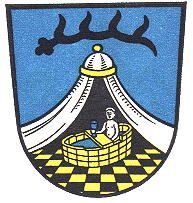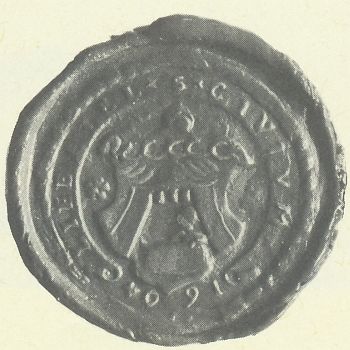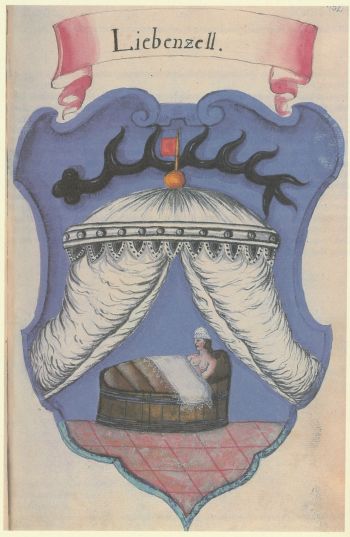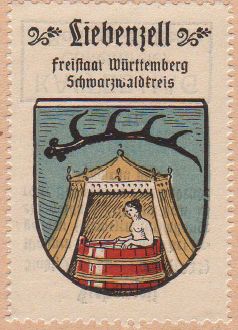Bad Liebenzell: Difference between revisions
Knorrepoes (talk | contribs) No edit summary |
Knorrepoes (talk | contribs) |
||
| Line 23: | Line 23: | ||
{|align="center" | {|align="center" | ||
|align="center"|[[File:badliebenzellz1.jpg|center]] <br/>The arms on the seal fron 1604 | |||
|align="center"|[[File:badliebenzell1.jpg|center]] <br/>The arms in a book from 1737 | |||
|- | |||
|align="center"|[[File:liebenzell.hagd.jpg|center]] <br/>The arms in the [[Kaffee Hag albums]] +/- 1925 | |align="center"|[[File:liebenzell.hagd.jpg|center]] <br/>The arms in the [[Kaffee Hag albums]] +/- 1925 | ||
|} | |} | ||
Revision as of 06:24, 27 June 2013
| Heraldry of the World Civic heraldry of Germany - Deutsche Wappen (Gemeindewappen/Kreiswappen) |
BAD LIEBENZELL
State : Baden-Württemberg
District (Kreis) : Calw
Additions : 1971 Beinberg, Monakam, Unterhaugstett, Unterlengenhardt; 1972 Möttlingen; 1974 Maisenbach
Official blazon
In Blau unter einer liegenden schwarzen Hirschstange in silbernem Zelt mit goldener Spitze auf schwarz-golden geschachtem Boden eine goldene Badewanne, in der ein badender Mann sitzt.
Origin/meaning
The present arms first appear on the seals in 1604. The oldest colour image dates from 1609. Prior to 1604 all seals showed the arms of Baden, as the town belonged to Baden until 1603, when Bad Liebenzell was acquired by Württemberg. The arms have not changed since.
The deer antler in the chief of the arms is derived from the arms of Württemberg. The person in the bath in the lower half probably symbolises St. Lioba, the local patron saint, who later changed into a male figure.
| The arms on the seal fron 1604 |
The arms in a book from 1737 |
| The arms in the Kaffee Hag albums +/- 1925 |
Literature : Jäger, 1986




